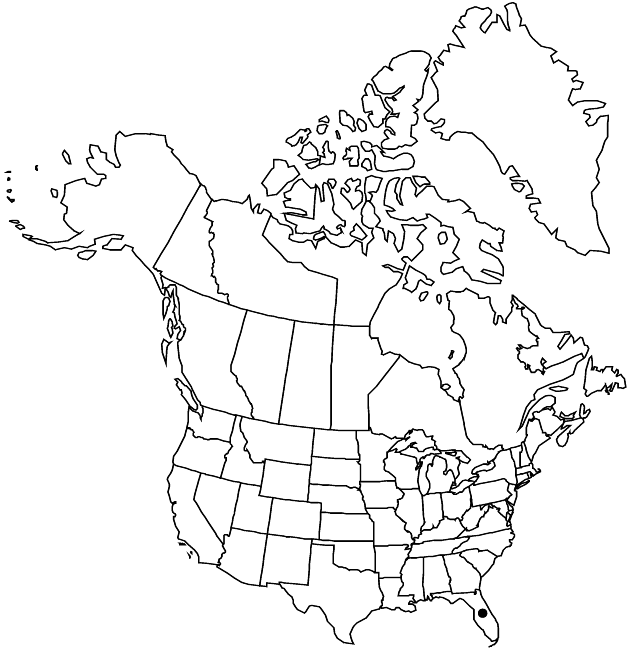Baccharis dioica
Symb. Bot. 3: 98. 1794.
Shrubs, 50–300 cm (much branched, bases woody). Stems erect, green, striate-angled, glabrous or slightly scurfy. Leaves present at flowering; short-petiolate; blades (1-nerved, lateral-veins obscure) obovate to spatulate, 10–30 × 7–18 mm (somewhat fleshy), margins entire or occasionally with 1–2 short, broad teeth per side, bases tapering, apices broadly obtuse, submucronate or slightly retuse, faces glabrous, gland-dotted, sometimes resinous. Heads (in terminal clusters) in (leafy) corymbiform or paniculiform arrays. Involucres obconic; staminate 3–4 mm, pistillate 5–7 mm. Phyllaries ovate to lanceolate, 1–4 mm, margins scarious-erose, medians green, apices obtuse to acuminate. Staminate florets 20–30; corollas 3–4 mm. Pistillate florets 20–30; corollas 4–5 mm. Cypselae 1–2 mm, 8–10-nerved, glabrous; pappi 3–5 mm (scarcely elongating in fruit).
Phenology: Flowering Aug–Nov.
Habitat: Hammocks and dune hollows, mangroves
Elevation: 0–10 m
Distribution

Fla., Mexico, West Indies
Discussion
Baccharis dioica is known from the southern tip of Florida. It is distinguished by its obovate, entire leaves with broadly obtuse apices, spreading phyllaries, and pappi that scarcely elongate in fruit.
Selected References
None.
Lower Taxa
"broad" is not a number.